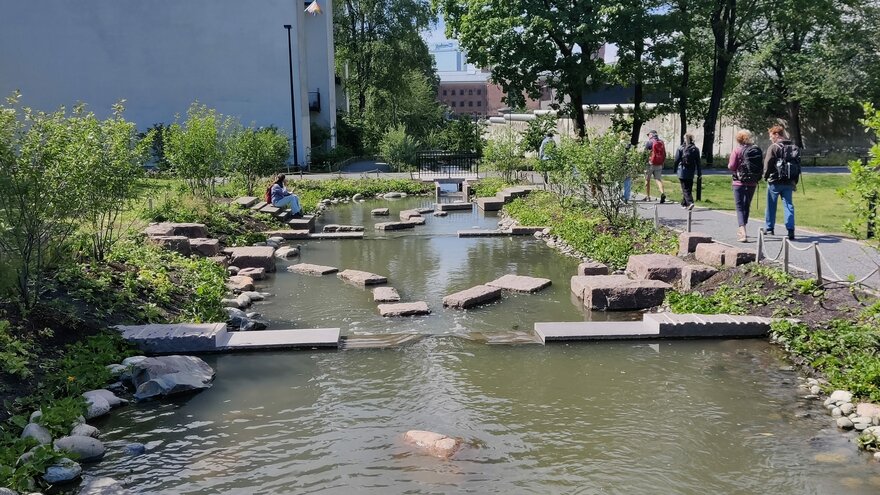Hovinbekken in Oslo is a prime example of implementing nature-based solutions in urban development. Where the purpose of the newly opened up river is not only meant to manage heavy rainfall, but also to support biodiversity, as well as to improve the quality of life for the local community. On June 6th, TOWARDS had the opportunity to visit Hovinbekken together with the FUGE research group.
Hovinbekken is Oslo’s most closed off river, as it runs from the north to the south in Oslo between Akerselven and Alna, mostly below ground. Throughout its path the river has recently been opened in various areas to be included in newly constructed park developments in the city.
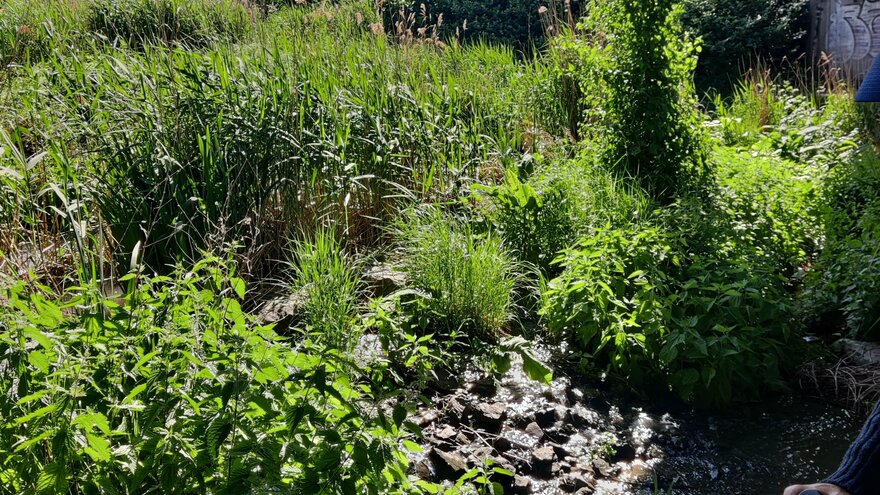
Photo: Caroline Karlsson
We started the tour in Hasle, in the newly established residential area called Hovinbekken. Here, we got a guided tour by landscape architect Simen Gylseth from Bjørbekk og Lindheim, and we were introduced to the inception of the river's reopening. Simen explained the intentions behind the plans and construction of the new water way.
He explained that the flow of the river is controlled by a dam, dividing its course between a subterranean culvert and the open channel. Vegetation in the water serves several functions, in addition to be beneficial for the biodiversity in the area, it also helps purify the water.
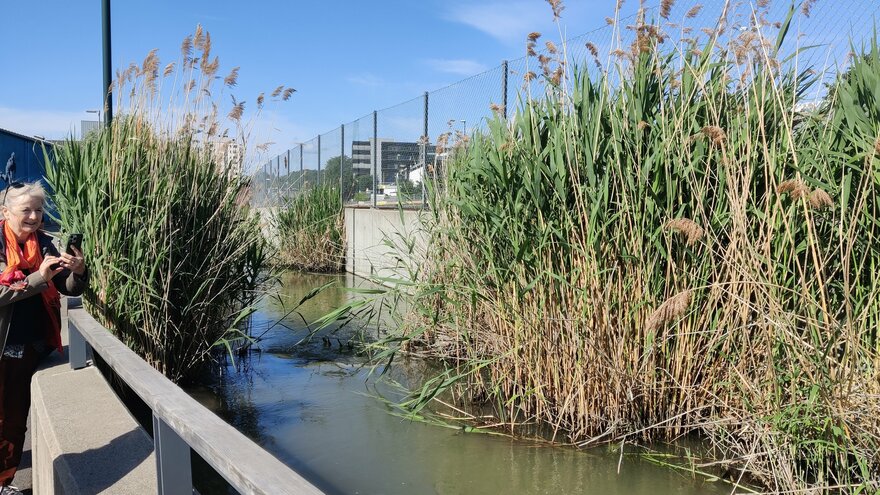
Photo: Caroline Karlsson
One of the challenges with the new water way is the unclear responsibility for managing the river. The water from the river brings with it a lot of sediments that needs to be regularly removed, and vegetation in the river needs to be held in check not to overgrow.
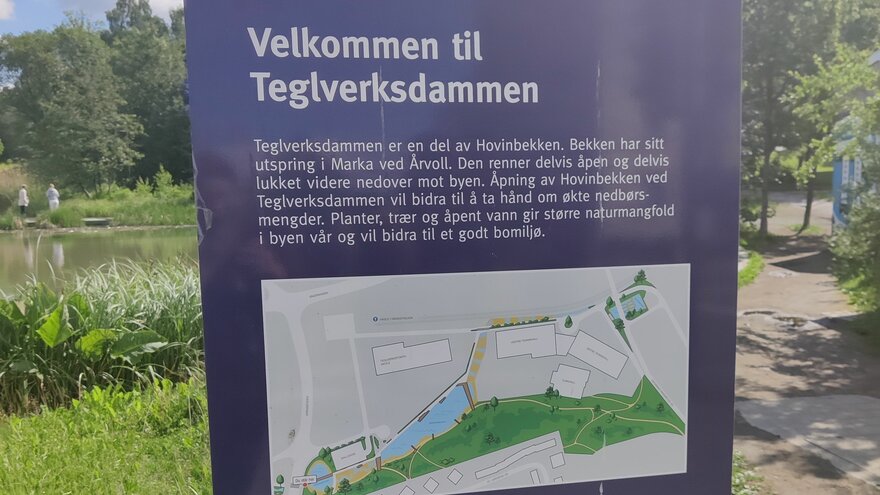
Photo: Caroline Karlsson
As we continued along the river, we reached Tegelverksdammen. This is a small, constructed pond, that serves as a beautiful recreational area as well as a natural purification of the water, as the open water surface lets more UV light reach the water masses. We were also happy to see that many water birds thought this was a perfect area to rear their chicks.
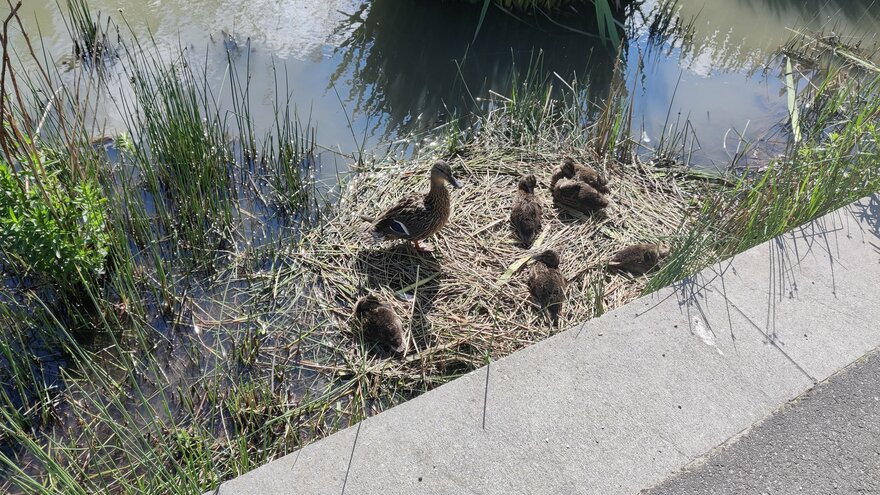
Further down the river we met up with landscape gardener Stein Anders Sundbye from Skaaret Landskap at Jordalparken. This is a newly established sports facility, opened in august 2022, with a skating park, a football court, and a hockey arena. The river flows down from the top of the park and circles around the court and skating park.
Stein Anders explained some of the challenges encountered in park management, notably highlighting an unforeseen issue: managing the damage from children playing in and around the water—an aspect they hadn't initially accounted for.
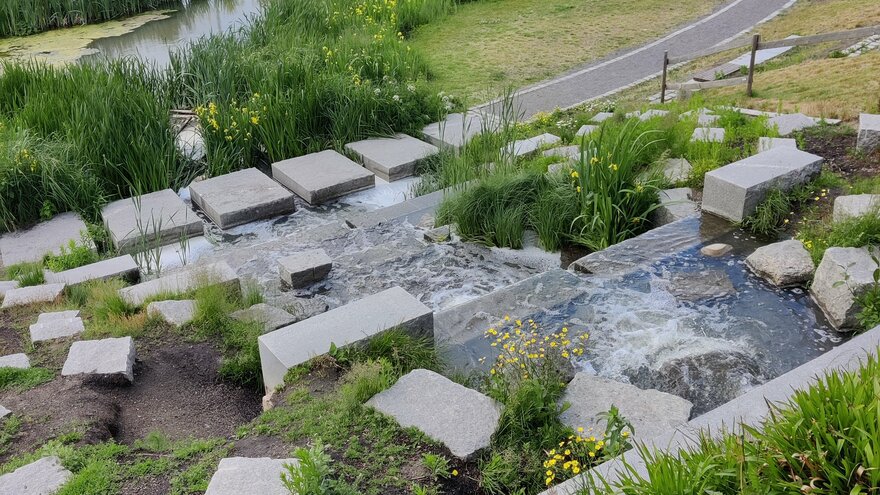
Photo: Caroline Karlsson
The final stop was Klosterenga park. This is a sculpture park in Gamle Oslo, with scultures from the artist Bård Breivik. In the summer of 2023, the river was opened up throughout the park and integrated to be an important part of the area.
